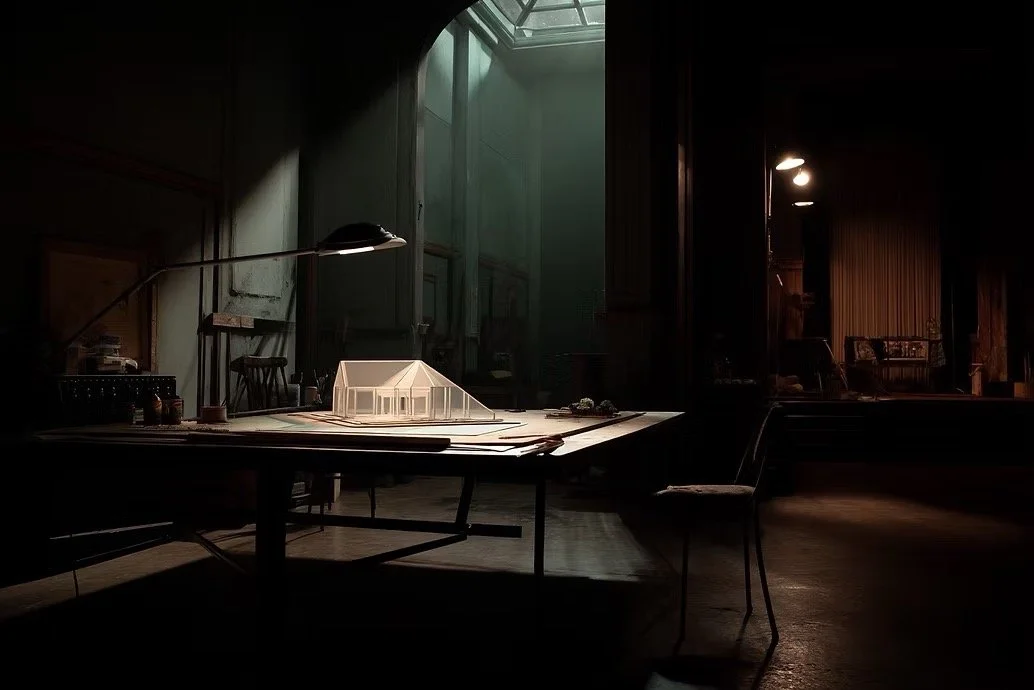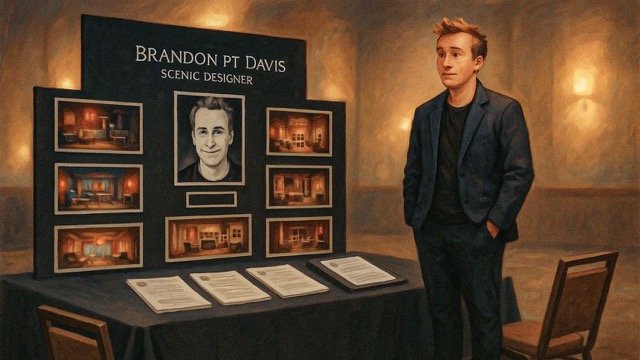Becoming a Scenic Designer: When the Work Starts to Feel Like Yours
A reflection for emerging scenic designers finding their voice.
Starting out as a scenic designer can feel like navigating a storm of excitement, doubt, and discovery. You’ve got your training, your taste, and maybe a few portfolio pieces—but nothing quite prepares you for that moment when someone hands you a script and says, “Let’s build a world.”
This post is for emerging scenic designers—those navigating their first few productions and wondering: When does it start to feel like mine? And if you’re further along in your career, maybe you’ll recognize yourself in this, too—a reflection of how far you’ve come and what still resonates.
Your First Scenic Design Job: Everything to Prove
That first opportunity is sacred. Someone trusts you to design. You print your ground plans with extra care. You over-label everything. The director—maybe a little anxious themselves—offers a lot of input, and the collaboration can feel more like correction.
You're revising and re-revising—version 15 of the ground plan is on your desktop. You’ve tested twelve different shades of beige, trying to strike the right balance between “period appropriate” and “not completely lifeless.” The couch has been re-sourced four times. You're zooming in on every inch of your render, worried someone might question the molding detail on the back wall.
You go through every revision like it’s a final exam. And by the time the show opens, you're proud—but not sure if what’s on stage still feels like your work. You smile through the celebration, but part of you wonders if you even recognize the set anymore.
Early Scenic Design Experiences: Repetition Without Ownership
The second production moves a little faster. There’s less hand-holding. Maybe fewer revisions. But that spark you remember from design class—the rush of creative ownership—feels a little out of reach.
By the third or fourth show, you're learning how to be efficient. You start anticipating changes before they're asked for. You’re dependable. But still… it doesn’t quite feel like your voice is leading the way.
Submitting a Scenic Design That Lands
And then, one day, it happens.
You send in a design, and the director replies with simple, thoughtful notes:
“Can we nudge this table to the right?”
“Can this chair sit more downstage?”
They’re not asking for conceptual changes. You nailed it. The world you imagined supports the story, fits the tone, and speaks clearly. There’s less fanfare and fewer rounds of applause. But for the first time, you feel it: this is my work.
Collaborating as a Scenic Designer: From Contributor to Vision Partner
As your confidence grows, so does your role in the process. Directors begin coming to you without a visual plan. You help shape the world from the ground up.
You’re no longer just reacting to input—you’re generating it. You’re leading conversations. You’re influencing tone, not just executing logistics. You become an asset.
The process gets smoother. And a little quieter.
When Scenic Design Becomes a Career, Not Just a Gig
Eventually, the work stops feeling like a breakthrough every time. It starts to feel like something you can do again and again—skillfully, intentionally, with clarity and ease.
It becomes a job.
Not a disappointment. Not a letdown. But a sign that you’ve crossed a threshold: you’re no longer proving yourself. You’re just doing the work. And the work is good.
The Quiet Win for Emerging Scenic Designers
This career isn’t always built on standing ovations. Sometimes, the most meaningful victories happen before the audience even enters the room.
If you’re early in your scenic design journey, take heart. That shift will come. One day, the notes will be small. The feedback will be minimal. And you’ll feel something more profound than validation:
You’ll feel like a designer.



